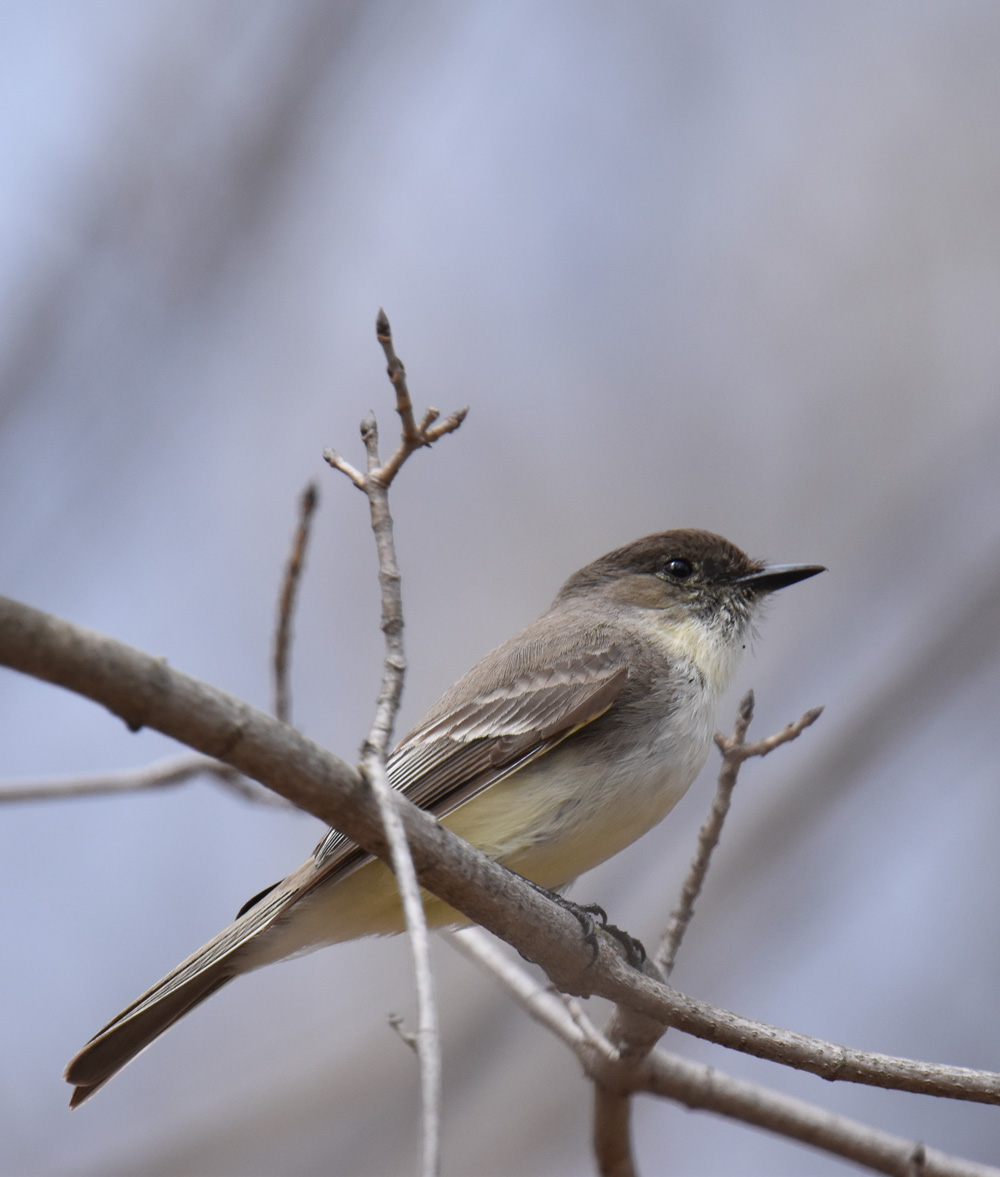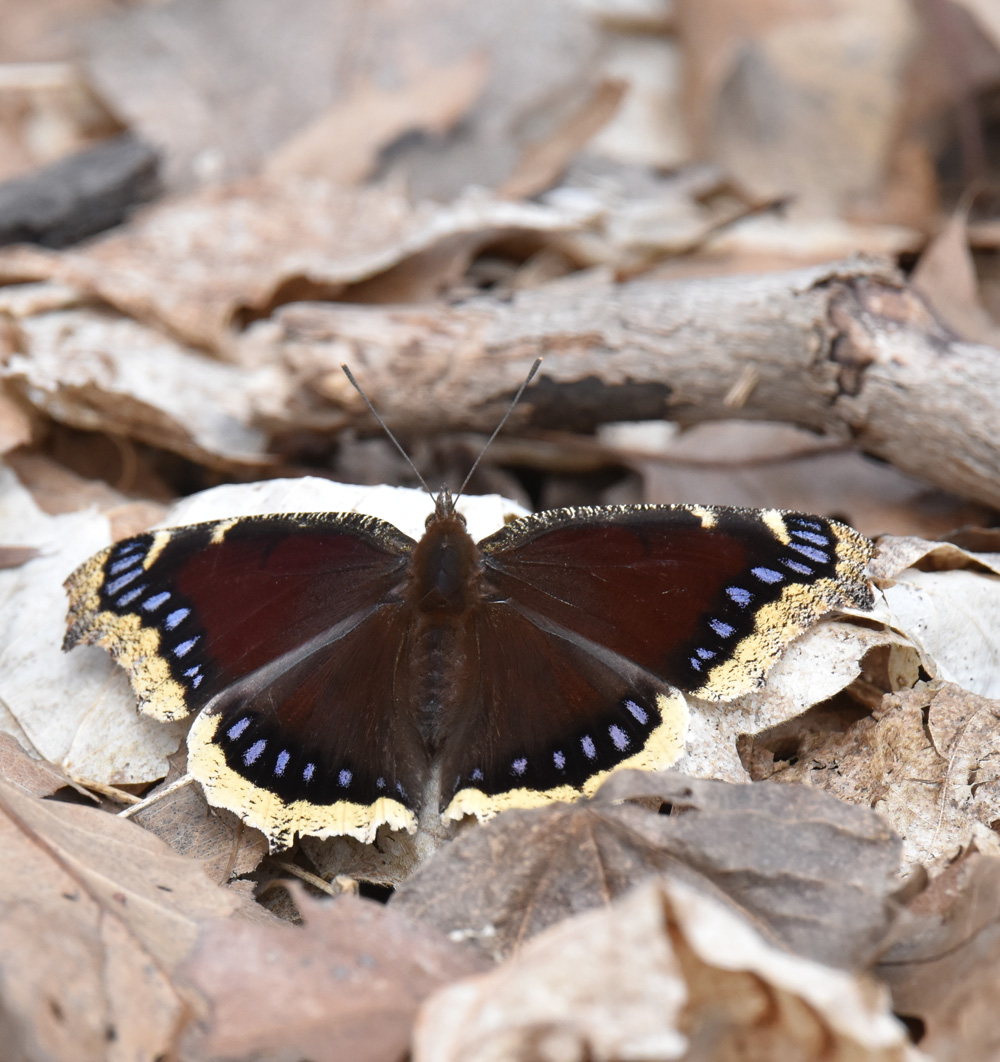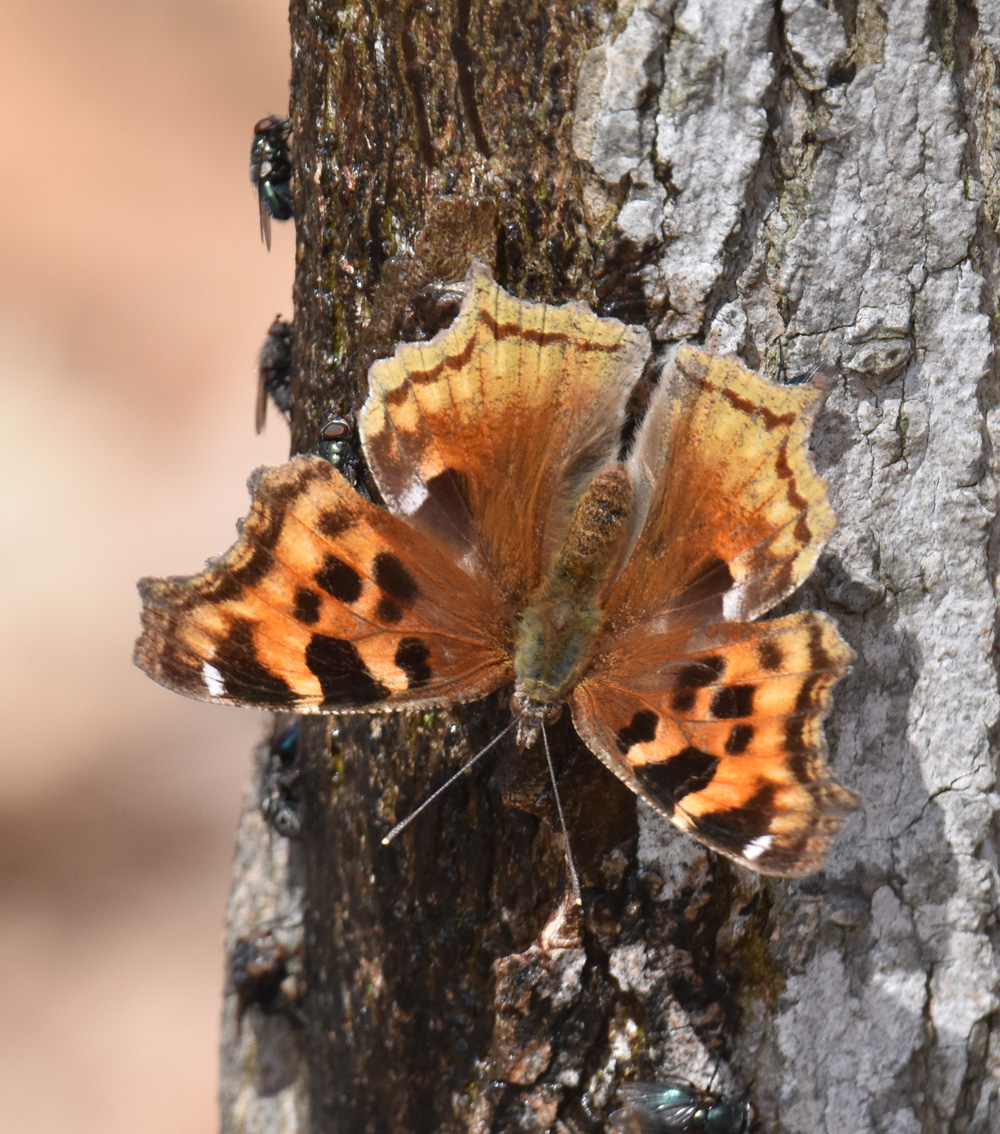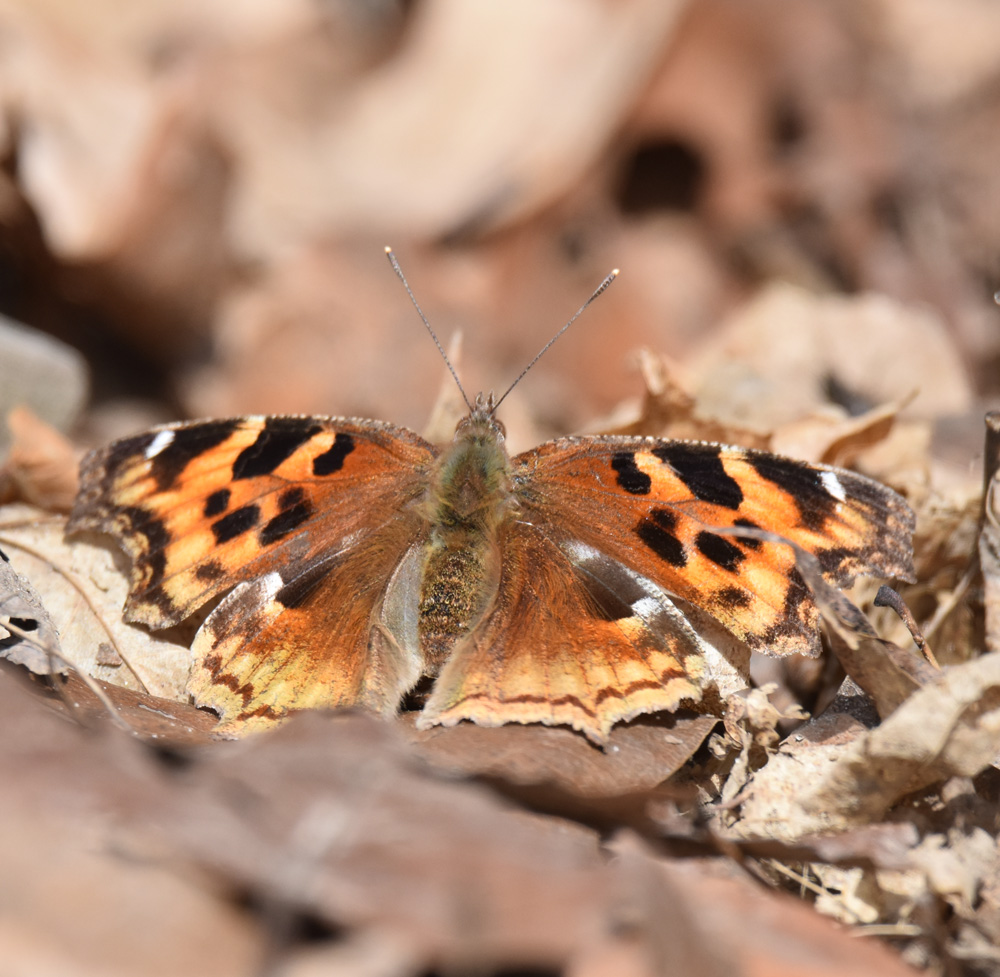This spring has seen the temperatures swing between summer highs and winter arctic lows. We’ve also been having a great few weeks for the farmers–long, steady drizzling rains day after day that have thawed the ground and started to sink in. With luck some of the local water tables and sloughs will be refilled. Whenever the somber grey skies have split apart into patches of blue and sun, I’ve tried to get out and enjoy the welcome change. I never know what to expect to see because migration has begun for the birds, dragonflies and butterflies. The trees are blooming, the plants are sprouting and the mammals are foraging. A recent ramble through the Riverwood Conservancy during the early afternoon gave me a chance to share the sunshine with a variety of other visitors including a Compton Tortoiseshell, a feisty Kinglet and several tail-wagging Phoebes.
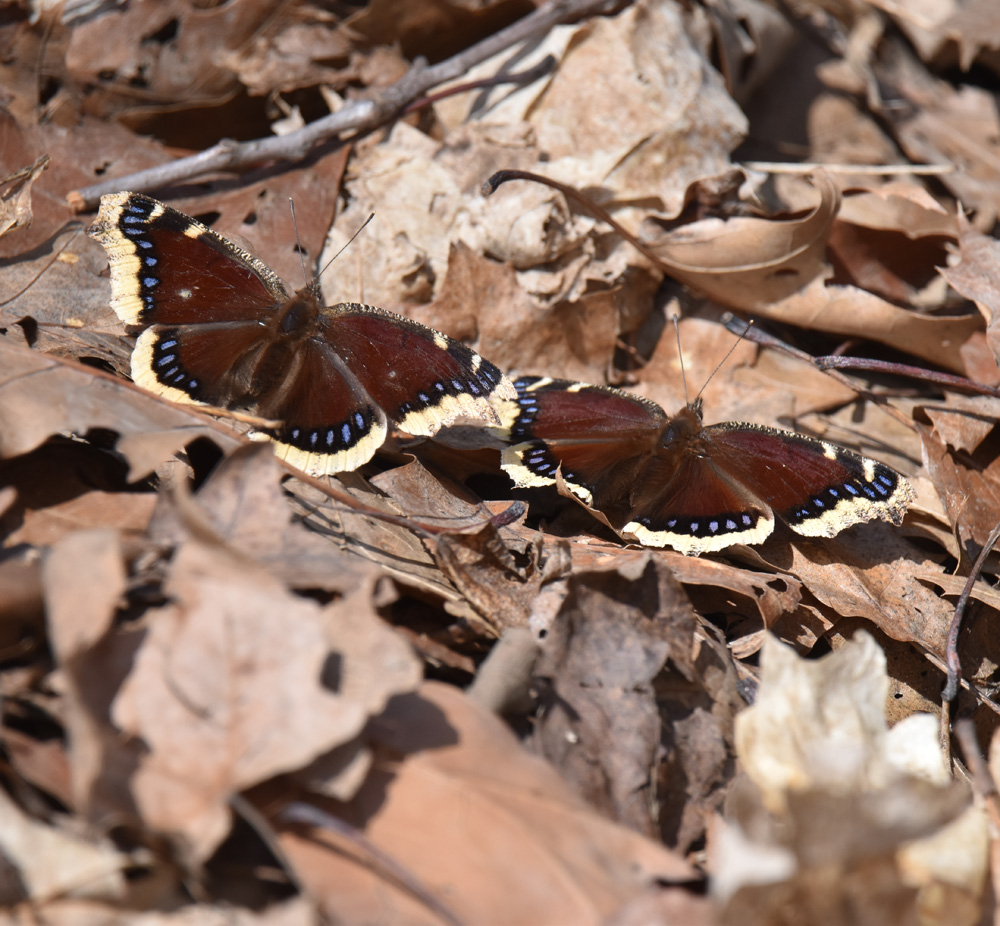
I’d never seen Mourning Cloaks holding hands before this!
First Flycatchers of Spring Stalk the Earliest Flies and Insects
No sooner do the first flies start buzzing about and warming on the sun-facing sides of trees, then the Eastern Phoebes fly back into town.
These small flycatchers are very simply coloured. Their call, though, is distinctive. And their habit of wagging their tails while perched makes them easy to identify from a distance, especially when so few other migrants are back yet.
What Little Brown and White Bird Is Circling Up That Tree Trunk?
If the Phoebes are back and the insects are out, I know to start paying more attention to flashes of white and motion on the tree trunks. All winter, I’ve been watching chickadees, nuthatches and woodpeckers on the trees but now there’s another bird joining in the hunt for hidden bugs.
Brown Creepers are not particularly colourful but their behaviour makes them fun to watch. They work their way rapidly up and around a tree trunk, then glide down to the base of another and start again. I like to try to guess where they might go next and whether they might land on a trunk closer to me or not. Their decision-making-process is hard to fathom, though, so I’m usually wrong.

Some of the first leaves of spring!
Some years I’m lucky enough to be out on the day the majority of the Creepers sweep through. On those days, you can literally see 14 birds on 14 trunks just by standing still in a wooded area. I didn’t manage that this walk, but I was happy to see my first Brown Creeper of spring.
What Little Green Grey Bird Has a Bright Yellow Spot On Its Head?
Once you find one spring bird catching insects, if you stay in that spot for a few minutes, you may find other migrants. The insects are most active where it is sheltered and warm and the birds know that’s where to hunt.

This Golden-crowned Kinglet may be a male given the orange streaks in the yellow crest.
While I was watching this feisty little Kinglet with its Golden Crown, I saw two Phoebes and the Brown Creeper. Of course the winter residents were also in the same patch of sunshine, so there was a pair of White-breasted Nuthatches, a Downy and three Chickadees to admire, too.
So Did I Find the Spring Butterflies I Was Seeking?
I know it’s a bad idea to go out on a walk intending to find something specific. It almost guarantees disappointment. However, I had gone out this afternoon hoping to see some butterflies more clearly which I had only tentatively identified the previous week. The breeze was colder than I expected and the sunny breaks were fewer and farther between than I would have liked. So I had almost given up on seeing any non-feathered fliers.
Then I reached a particularly sheltered nook along the trail–and I startled two Mourning Cloaks up and into flight. Oops! One quickly landed again and I admired it while waiting to see if the other would also come back.
When it didn’t, I moved further along the trail, admittedly a bit more cautiously now.
And to my amazement and pleasure, I discovered an shimmer of butterflies! A small sapling had been damaged and the butterflies were literally lining up for a sip of the sap.
First I saw a few Mourning Cloaks, then, to my great satisfaction, a single Compton Tortoiseshell flew up and landed on the trunk. Rather belligerently, it walked towards the main sap spill, flaring its wings at the butterflies already standing there. Either they were no longer particularly thirsty or they found this behaviour unsettling, because they edged aside and let the Compton take possession of the best spot.
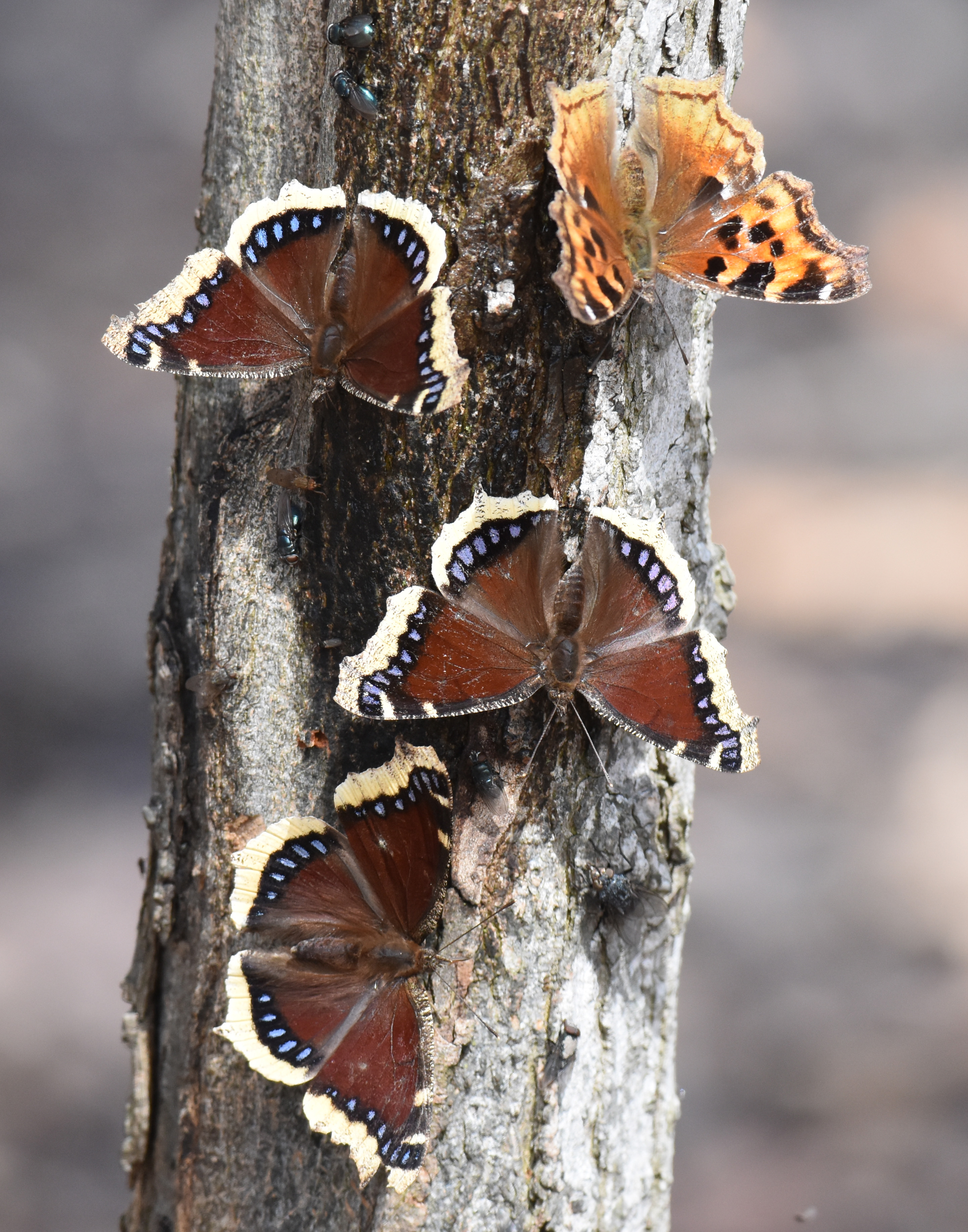 At one point there were four Mourning Cloaks and the Compton all after sap at the same time.
At one point there were four Mourning Cloaks and the Compton all after sap at the same time.
The trunk was also abuzz with a variety of other small insects including colourful flies. I didn’t see any wasps or bees, though. The previous week, I had seen several bees feeding, or trying to feed, on a pile of white rice someone had poured on one of the bird-feeding stumps.
I waited patiently nearby staying well back so that the butterflies could bask and sip sap without wasting precious energy avoiding me.
In between visits to the sap, the Mourning Cloaks and Compton landed near the tree on drifts of dead leaves. Each turned till the sun was shining fully on its back and just stood still. None of the butterflies interacted with each other which I found interesting. Mourning Cloak butterflies are quite territorial at times and will chase away intruders. Yet five of them were perched only a few inches apart on the leaves totally ignoring each other.
Eventually, I left them to sunbathe and continued on my ramble. A Red-tailed Hawk flew past me and landed quite low in a tree nearby. Three Turkey Vultures tried unsuccessfully to catch a thermal along the edge of the hill. Several bird watchers, photographers and dog owners paused to chat. We’d all had a marvellous afternoon. I hope to repeat the experience soon!
Related Reading
- November Butterflies and a Bonus Bird at Colonel Sam Smith Park in Toronto
- Spring Wildflowers at Sixteen Mile
Join In
Have you seen a shimmer of spring butterflies? Please share your sighting with a comment.

